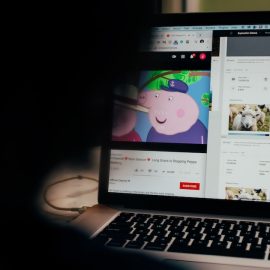

This article is an excerpt from the Shortform book guide to "Hit Refresh" by Satya Nadella. Shortform has the world's best summaries and analyses of books you should be reading.
Like this article? Sign up for a free trial here.
What difference do diversity and inclusion make for Microsoft? What could these values do for your company?
Microsoft CEO Satya Nadella can be seen as a diversity success story: an Indian immigrant who was able to rise through the ranks of Microsoft to eventually become its CEO. In his book Hit Refresh, he discusses Microsoft’s diversity and inclusion efforts under his leadership and why he has these values.
Read more to learn how diversity can help a company do new things.
Microsoft’s Diverse Workforce
Nadella believes that Microsoft’s diversity and inclusion contribute to an innovative workplace. Having diverse employees prevents homogeneous thinking, opening up the company to different values and perspectives that lead to better ideas and products.
While Nadella espouses diversity and inclusion, he admits that he still has his own blind spots. One headline-grabbing occurrence was his appearance at the Grace Hopper Celebration for women in computing in 2014, where he was invited to talk about increasing the visibility and involvement of women in tech industries. When asked how a woman in tech could approach getting a pay raise, Nadella claimed that, so long as someone continues to work hard and well, they will eventually be recognized for their efforts and rewarded accordingly—an assumption that, as the questioner pointed out, was not at all in keeping with her own experiences and those of many other women in tech.
| Women and Tech: Recognizing Common Obstacles In spite of the advancements women have made in recent years, women still face significant barriers when pursuing careers in tech. These barriers include: 1) Sexism around women’s professional roles. Tech is still a male-dominated field, and traditional ideas around which roles and careers women “should” prefer can act as a hindrance. A lack of visibility of women in tech also means that women rarely get exposure to potential mentors, and remain ignorant of the opportunities available. 2) Social conditioning. While men are often encouraged to be confident go-getters in the workplace, many women struggle to assert themselves when it comes to promotions, pay raises, and making their ideas heard. This means that—as Nadella himself discovered—even deserving women are frequently overlooked while working in the tech field. 3) Lack of support. Tech cultures are not always family-friendly or sensitive to the needs of women, many of whom may prefer more flexible work options and a more supportive work culture. Balancing professional and family obligations remains an issue for many. |
Nadella recognized and learned from this mistake: After the conference, he sent a company-wide email, owning up to his blunder and stressing that his answer was completely wrong. He had seen first-hand how women (like his mother and his wife) had to put careers on hold for the sake of children and reiterated that leaders should actively root out biases to create a fair environment where everyone can speak up for themselves. Since then, Microsoft has become more transparent about pay equity and channels resources into diversity programs.
| Creating a More Inclusive Workforce Many modern businesses are increasingly aware of the problems of diversity and inclusion in the workplace, and are placing a greater emphasis on the DEI approach (Diversity, Equity, Inclusion). Diversity is about ensuring more equal representation across different ethnic, racial, and sexual orientations when hiring employees. Equity is about creating a workplace in which everyone has equal opportunities to excel. Finally, inclusion is about making sure every employee has a positive work experience, and that each employee feels capable of participating to the best of their abilities. Trying to bring greater diversity in the workplace isn’t as easy as it seems. As research suggests, diversity training is frequently ineffective, since participants can often respond negatively to it as a seemingly coercive measure. Nevertheless, a more diverse workforce does bring many tangible benefits, such as greater profitability than more homogenous workplaces, as the mix of backgrounds and perspectives can create a more dynamic and innovative team. |

———End of Preview———
Like what you just read? Read the rest of the world's best book summary and analysis of Satya Nadella's "Hit Refresh" at Shortform.
Here's what you'll find in our full Hit Refresh summary:
- How Satya Nadella brought Microsoft back from its decline
- Actionable advice to help you reinvigorate your company
- A look at the ethical responsibilities of tech companies






